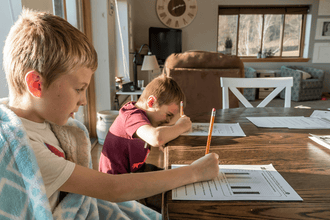
The Importance of Routine and Structure for Children with Sensory Processing Disorder (SPD)
Introduction:
Sensory Processing Disorder (SPD) is a neurological condition that affects how individuals process and respond to sensory information from their environment. Children with SPD often struggle with everyday activities and may experience difficulties in areas such as sensory integration, self-regulation, and social interactions. Establishing a routine and providing a structured environment can greatly benefit children with SPD, helping them navigate the challenges they face and promote their overall development and well-being.
1. Creating Predictability:
Children with SPD often have difficulty processing and adapting to sensory stimuli, which can lead to feelings of overwhelm and anxiety. By establishing a consistent routine, parents and caregivers can create a predictable environment that helps children feel more secure and in control. Knowing what to expect and when can reduce stress and create a sense of stability, allowing children to better manage their sensory sensitivities.

2. Enhancing Self-Regulation:
Sensory processing difficulties can make it challenging for children with SPD to regulate their emotions and behaviors. A structured routine provides a framework for children to develop self-regulation skills. By incorporating activities that support sensory integration and provide opportunities for calming and organizing their sensory systems, children can learn to better manage their sensory needs and emotions. This, in turn, can lead to improved attention, impulse control, and overall self-regulation.
3. Building Independence:
Children with SPD often require additional support and guidance to navigate their daily activities. A structured routine helps them develop a sense of independence by providing a clear framework for completing tasks and transitioning between activities. By breaking down activities into smaller, manageable steps and providing visual schedules or prompts, children can learn to navigate their routines more independently. This not only builds their confidence but also fosters a sense of accomplishment and self-esteem.
4. Facilitating Learning and Skill Development:
Consistent routines and structured environments provide opportunities for children with SPD to develop and practice essential skills. By incorporating sensory-based activities into their routines, children can engage in sensory integration exercises that help them regulate their sensory systems. Additionally, structured environments can support skill development in areas such as communication, social interaction, and motor skills. By consistently practicing these skills within a routine, children can make progress and improve their overall functioning.
5. Promoting Positive Social Interactions:
Children with SPD often face challenges in social situations due to their sensory sensitivities or difficulties in understanding social cues. A structured routine can help create opportunities for positive social interactions by incorporating structured playdates, group activities, or therapy sessions. By providing clear expectations and consistent routines, children can feel more comfortable and confident in social settings, leading to improved social skills and relationships with peers.

Conclusion:
Routine and structure play a critical role in supporting children with SPD. By creating predictability, enhancing self-regulation, building independence, facilitating learning and skill development, and promoting positive social interactions, a structured environment can significantly contribute to the overall well-being and development of children with SPD. As parents, caregivers, and educators, it is essential to recognize the importance of routine and structure and incorporate them into the daily lives of children with SPD to help them thrive.










